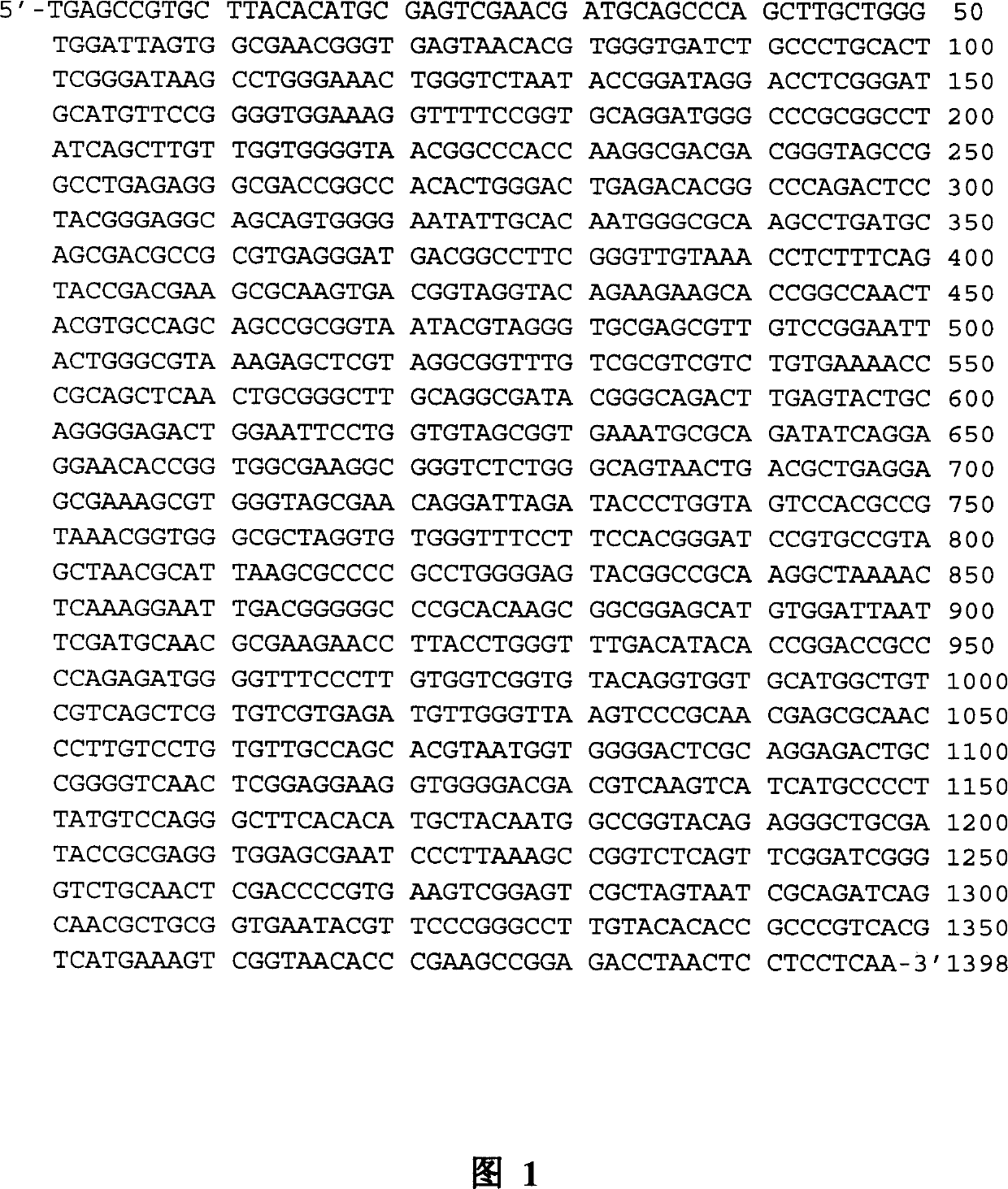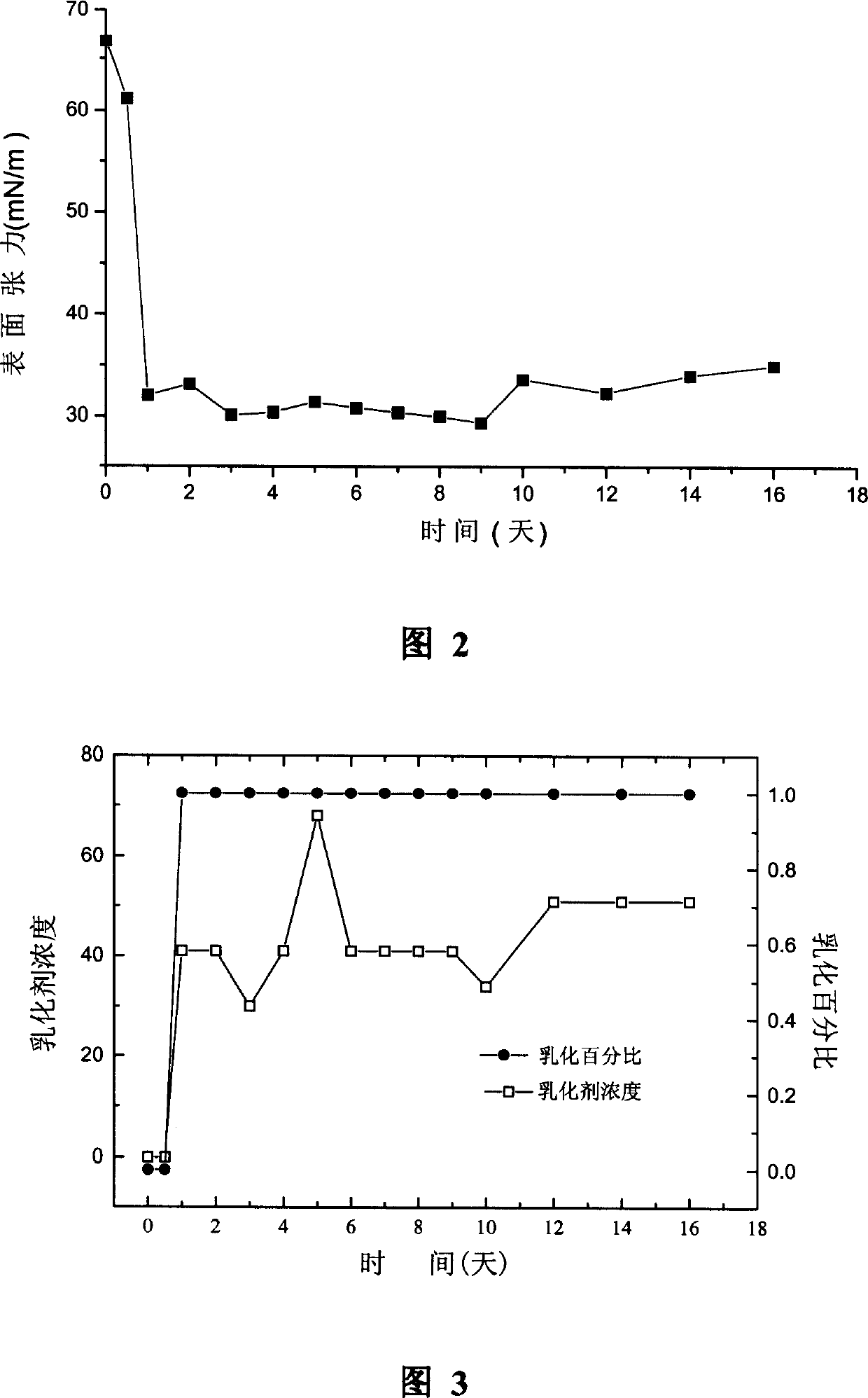Erythro micrococcus Em and usage for generating biologic emulsifier as well as degrading polycyclic aromatic hydrocarbon
A bioemulsifier and polycyclic aromatic hydrocarbon technology, which is applied in the field of microbial biotechnology and environmental biology, can solve problems such as poor effect and the industrialization of oil pollution bioremediation technology has not yet been formed.
- Summary
- Abstract
- Description
- Claims
- Application Information
AI Technical Summary
Problems solved by technology
Method used
Image
Examples
Embodiment 1
[0032] Embodiment 1: the isolation and screening of the Rhodococcus ruber Em bacterial strain provided by the invention
[0033] Soil samples were collected from the crude oil-contaminated soil around the oil wells in Huabei oil field, and 50 grams of the sample was suspended in 50 mL of sterile saline, shaken on a shaker for 30 minutes to fully suspend, and left to stand for 30 minutes, and 10 mL of the upper suspension was inoculated into 100 mL of inorganic salts In the medium (medium composition: K 2 HPO 4 ·3H 2 O, 1g; KH 2 PO 4 , 1g; MgSO 4 ·7H 2 O, 0.5g; NH 4 NO 3 , 1g; CaCl 2 , 0.02g; FeCl 3 Trace amount; alkanes, 1g or aromatic hydrocarbons, 0.1g; distilled water, 1000mL; pH7.0; sterilized at 121°C for 30min), cultivated on a shaker (200rpm) at 30°C for 7 days, took 10mL of the culture solution to inoculate the fresh medium, and press The same operating conditions were continuously acclimatized for 3 times, and then separated by streaking on the inorganic sal...
Embodiment 2
[0034]Embodiment 2: PCR amplification and sequence determination of the 16S rRNA gene of Rhodococcus ruber Em bacterial strain
[0035] Rhodococcus ruber Em strain was inoculated with LB medium, cultured on a shaker at 30°C (200rpm) for 18 hours, centrifuged to collect cells, resuspended, added lysozyme to break the wall, extracted DNA by phenol-chloroform method, and used forward primer 27f(5' -GAGAGTTTGATCCTGGCTCAG-3') and reverse primer 1541r (5'-AAGGAGGTGATCC AGCC-3') are universal primers for PCR amplification of its 16S rDNA, and the amplified products are sent to Shanghai Jikang Company for sequencing. The PCR conditions are: 95°C, 10min; 94°C, 1min, 48°C, 1min, 72°C, 1min; 30 cycles, 72°C, 5min, 4°C storage. The length of the 16S rDNA sequence is 1398bp, and the sequence accession number in GenBank is AF529079, which is similar to the strain Rhodococcus rubber DSM43338 T The sequence similarity of 16S rDNA (accession number: X80625) is 99%. See Sequence Table 1 and F...
Embodiment 3
[0036] Embodiment 3: Rhodococcus ruber Em bacterial strain provided by the invention is to the degradation of polycyclic aromatic hydrocarbons
[0037] Get the fresh slant bacterial classification of this bacterial strain, inoculate an inoculation loop in the Erlenmeyer flask that 100mL containing different petroleum hydrocarbons as the inorganic salt medium (substratum composition is the same as embodiment 1) of carbon source is housed, 30 ℃ of shaker cultures (200rpm ) for 3 days, measure the growth of bacteria (OD 460 ) and the degradation (HPLC) of hydrocarbons, the results are shown in Figure 6, and Figure 6-1 shows that to 200mg / L of benzene, after 3 days of cultivation, the degradation rate can reach 95%; Figure 6-2 shows that, For 100mg / L naphthalene, the degradation rate can reach 99%; Figure 6-3 shows that for 50mg / L anthracene, the degradation rate can reach 67%; Figure 6-4 shows that for 50mg / L pyrene, the degradation rate can be up to 13%.
PUM
 Login to View More
Login to View More Abstract
Description
Claims
Application Information
 Login to View More
Login to View More - R&D
- Intellectual Property
- Life Sciences
- Materials
- Tech Scout
- Unparalleled Data Quality
- Higher Quality Content
- 60% Fewer Hallucinations
Browse by: Latest US Patents, China's latest patents, Technical Efficacy Thesaurus, Application Domain, Technology Topic, Popular Technical Reports.
© 2025 PatSnap. All rights reserved.Legal|Privacy policy|Modern Slavery Act Transparency Statement|Sitemap|About US| Contact US: help@patsnap.com



